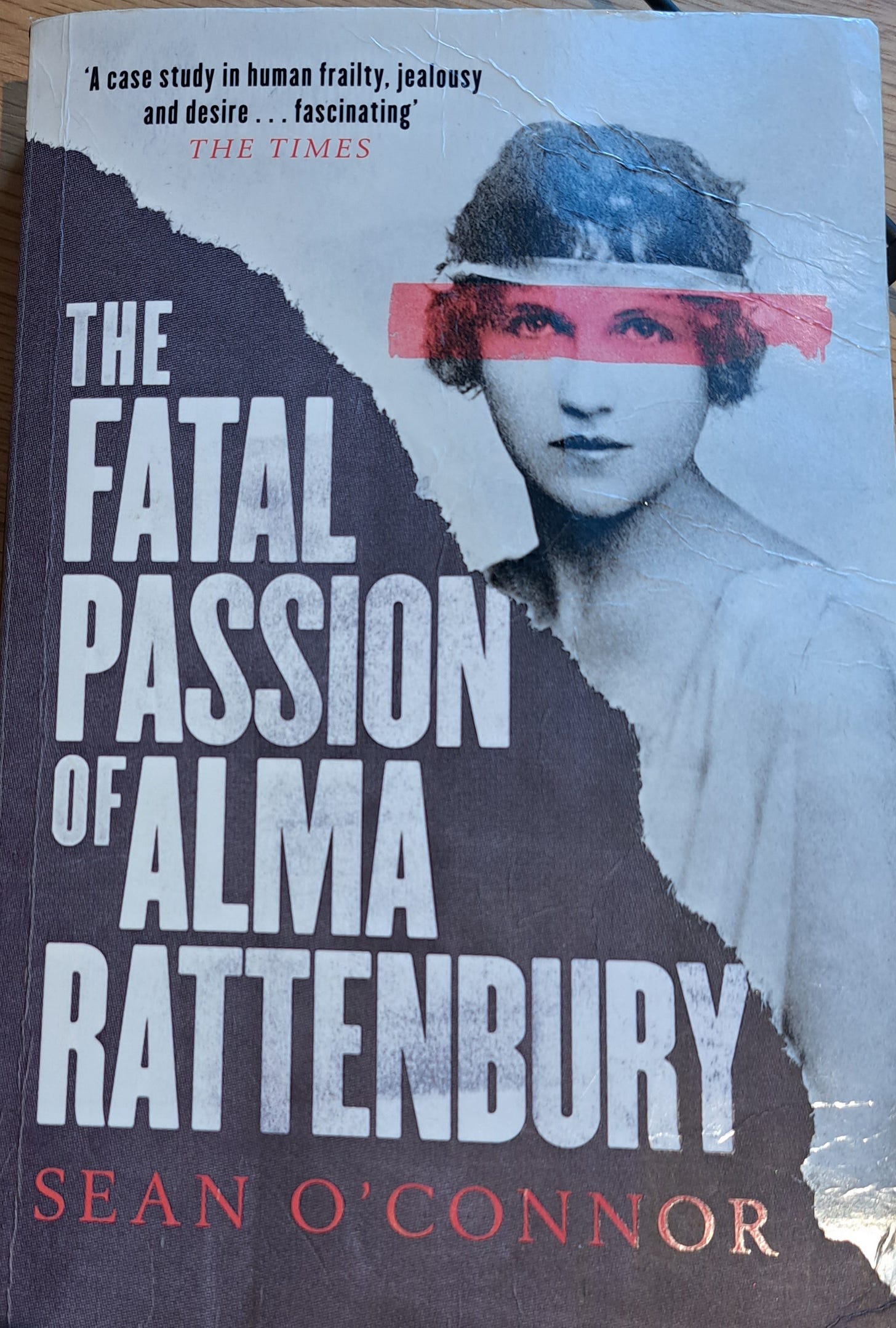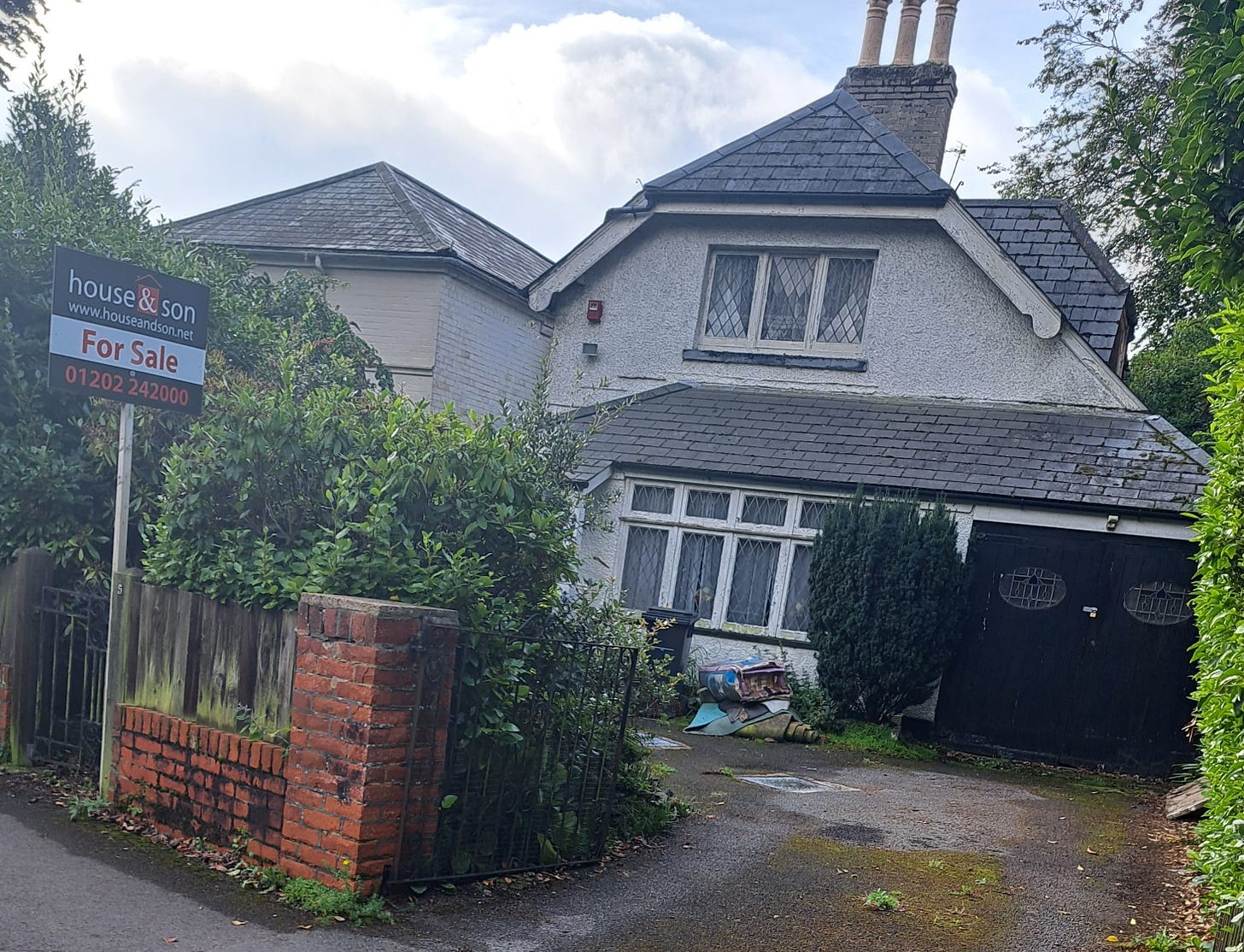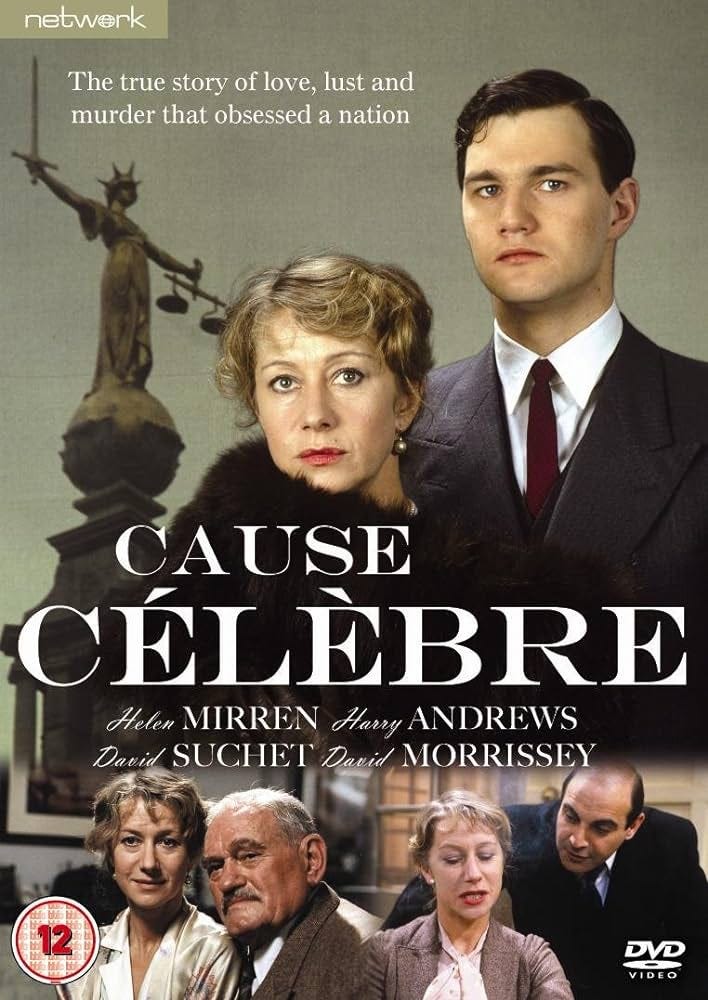Fancy a house with a history?
The site of a murder which has inspired books, plays and countless articles for more than 80 years is for sale
His name is pretty much forgotten now, unless you are a true crime aficionado, but 80 odd years ago a celebrated Canadian architect met his death in a modest pebble-dash cottage in the pine-shaded streets above the golden beaches of Bournemouth.
Ending his days in such a typically suburban home adds a particular poignancy to the story of a man who designed some of the most spectacular buildings in British Columbia, including the Parliament Buildings in the provincial capital Victoria and the towering Empress Hotel which stands nearby. At the height of his success he enjoyed wealth and celebrity, but Francis Mawson Rattenbury is mostly remembered today as a victim in a rather sordid British murder.
I won’t give away most of Rattenbury’s extraordinary life history - nor the details of how he died at the hands of a tormented young man who was his chauffeur and the lover of Rattenbury’s younger second wife. Alma Rattenbury was a complex woman, a talented pianist, singer, composer and a bit of a femme fatale. There’s a rather good book which will give you all you might want to know - The Fatal Passion of Alma Rattenbury by Sean O’Connor (Simon & Schuster UK). O’Connor is the latest in a line of writers and legal experts who have re-told the Rattenburys’ unhappy tale. It also forms the basis of the Terence Rattigan play Cause Celebre and another well-known version is the 1979 book Murder at the Villa Madeira by the solicitor Sir David Napley, something of a celebrity himself, whose clients included Jeremy Thorpe, Maria Aitken, Princess Michael of Kent and former MP Harvey Proctor.
But let’s return to Manor Road, the tree-lined avenue on the East Cliff of Bournemouth which overlooks the town’s glorious 7 mile beach - surely one of the best in Britain. I’ve been spending a bit of time in Bournemouth recently and, having read O’Connor’s book I decided to see if Villa Madeira still stands. It does indeed - in fact, it could be yours, as a local estate agency firm has its sale board prominently out front. [Summer 24 update: the house has been sold and new folk have moved in]
Don’t be put off by the grisly murder story - subsequent owners of the house have lived there perfectly happy with its history. For many years after the murder, it was owned by the Landsteins, a family of Jewish refugees from Nazi Germany. Mrs Landstein, interviewed about the house for a 1984 BBC radio programme on historical murders, told how she lit a candle in the house every year on the anniversary of the event. She said she felt a strong connection with Alma Rattenbury and had the garden planted with pink flowers, as she thought Alma would have wanted. Subsequently Mrs Lansdstein left the house to her niece who also lived there happily.
Although the Rattenburys stayed for several years at Villa Madeira, with their son John and Alma’s son Christopher from a previous relationship, they were never the owners, choosing to rent the property when they arrived from British Columbia after Frank’s architecture practice began to struggle. Local society in Victoria, the BC capital with its spectacular harbour location on Vancouver Island, had turned against the couple after their affair resulted in notorious confrontations with Florrie, Rattenbury’s wife of many years and mother of his first two children, Francis Burgoyne (better known as Frank) and Mary.
Rattenbury was in difficult financial circumstances by the time of the move to Bournemouth. Although they employed a maid and a chauffeur there were constant money worries. While his employers argued and blamed each other for their downfall, George Stoner, the chauffeur, became close to Alma who found her older husband tiresome. She once told a friend: “He knows as much about me as I know about Timbucktoo”. The couple lived in different parts of the house, by the time of the murder in March 1935. Briefly, the facts are that Rattenbury was killed with a mallet, somebody striking him three times on the head. Both Stoner and Alma were subsequently arrested and the two stood trial for murder at the Old Bailey. The case filled the newspapers for days. Eventually the jury found Alma Rattenbury Not Guilty, but Stoner Guilty.
The drama was far from over, however. There was a major outcry against the death sentence for Stoner and a 350,000 name petition for clemency was raised. Alma Rattenbury, clearly in a dangerously agitated state in the days following her acquittal and - as demonstrated by letters she left behind - was wracked with guilt over the fate of George Stoner. She committed suicide shortly after the trial ended and her body was found in the River Avon at Christchurch, near her Bournemouth home.
Plans for the execution of Stoner proceeded apace, however. Two weeks before the due date he was visited by court officials in his prison cell to be told of the time and place of his impending death. He seemed initially unmoved. However, when they also told him that Alma Rattenbury had committed suicide his composure collapsed. With his Alma safe from the law, Stoner withdrew a statement he had made admitting the murder and produced a new confession implicating his lover.
In the end, it was public opinion and the view of the jury, which had asked for mercy when they found him Guilty, which swayed the legal authorities, not Stoner’s new claim. The chauffeur’s death sentence was commuted and the Home Secretary of the time substituted a prison term of seven years, which Stoner served on the Isle of Wight.
The story of Rattenbury and Alma still intrigues and new treatments were still appearing 70 years after the murder. Do read O’Connor’s book or, if you want deeper research, any of the other volumes which cover the story. If you prefer a visual version, a TV production of Cause Celebre, starring Helen Mirren as Alma, Harry Andrews as Rattenbury and David Morrissey as the confused young murderer, was made in 1987 by Anglia TV and is still available in DVD from the usual sources (Amazon has it for £6.29 as I write). George Stoner’s name was changed to Bowman by the producers, supposedly for legal reasons as he was still alive.
It is a story of human frailties, of deception, of love and ultimately it is a tragedy. You can take nothing on face value - astonishingly Rattenbury himself was a self-created fiction. He wasn’t Canadian at all, but was a lad from Leeds who had joined his uncle’s architectural practice there, but never rose above a technician and certainly had no formal architectural qualifications. Yet when he emigrated to Canada and ended up in the booming West Coast, he had the nerve to answer a newspaper advertisement from the Provincial Government looking for an architect to design their proposed Parliament Building. More astonishing still, he won the contract - and nobody bothered to ask him for formal proof of his qualifications.
From that deception Rattenbury laid the foundations of a future which would take him to the heights of professional esteem before imploding into a nightmare saga of murder and betrayal.






Living as I do in Victoria, British Columbia, I can assure you that Francis Rattenbury's name is far from forgotten here. In addition to the Legislative Buildings, Rattenbury is responsible for designing many of the grand homes that still stand in Victoria's older neighbourhoods. As I also lived in Bournemouth as a child, I can attest to there being more than just a passing similarity between the two cities, the Victoria of 125 years ago aspiring, quite successfully, to create a small piece of England on the far west coast of Canada.